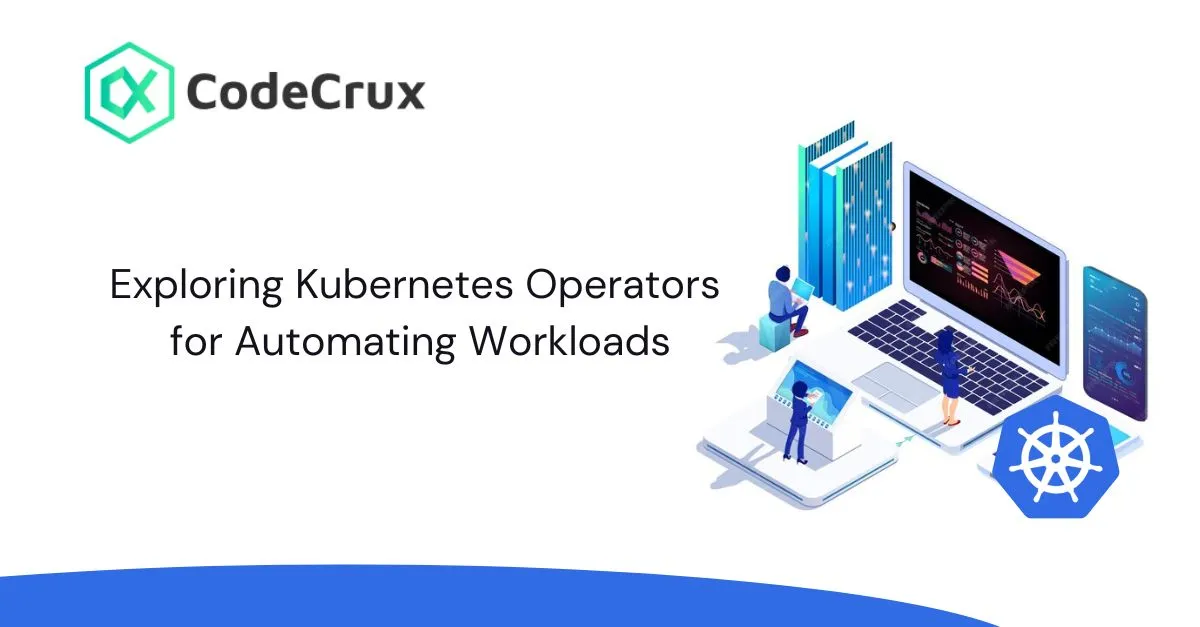Exploring Kubernetes Operators for Automating Workloads

Kubernetes, the leading container orchestration platform, has revolutionized the way we deploy, scale, and manage applications. However, as workloads become more complex, managing the lifecycle of these applications often requires custom operational expertise. Enter Kubernetes Operators — a powerful framework for automating application management tasks that were once manual and time-consuming.
In this blog, we’ll dive into what Kubernetes Operators are, their benefits, and how they simplify workload automation.
What Are Kubernetes Operators?
A Kubernetes Operator is a custom controller that extends the Kubernetes API to manage the lifecycle of a specific application or service. Built using the Operator pattern, these controllers encode domain-specific operational knowledge into software.
At its core, an Operator watches over a particular resource, evaluates its desired state (specified via custom resources), and takes the necessary actions to reconcile the current state with the desired one.
Key Features of Kubernetes Operators:
- Custom Resources: Operators use custom resources to define the configuration and desired state of the application.
- Automation: Operators automate complex tasks like installation, scaling, backup, and updates.
- Domain Knowledge: Operators encapsulate operational knowledge specific to the application they manage.
Benefits of Using Kubernetes Operators
1. Simplified Workload Management
Operators abstract away the complexity of managing applications. By automating routine tasks such as scaling, rolling updates, and failover handling, Operators reduce manual intervention.
2. Consistency Across Environments
With Operators, you can ensure consistent management of your applications across development, testing, and production environments.
3. Improved Reliability
Operators continuously monitor the application’s state and automatically resolve issues, ensuring higher uptime and reliability.
4. Scalability
As your workload grows, Operators enable automatic scaling based on resource utilization, traffic, or custom metrics.
5. Customization
Operators can be tailored to meet specific operational requirements, giving teams granular control over their applications.
Common Use Cases for Kubernetes Operators
- Database Management: Operators for databases like PostgreSQL, MongoDB, and Cassandra handle provisioning, backups, replication, and scaling.
- Monitoring Tools: Tools like Prometheus and Elasticsearch use Operators to manage deployments and configurations.
- Machine Learning Pipelines: ML workloads often require specialized orchestration, which Operators can handle efficiently.
- Disaster Recovery: Operators can automate tasks like data backup, restoration, and failover in case of disruptions.
How Kubernetes Operators Work
-
Custom Resource Definition (CRD)
Operators introduce custom resource definitions (CRDs) to extend the Kubernetes API. These resources describe the application’s desired state. -
Reconciliation Loop
The Operator constantly watches the custom resources and compares the current state with the desired state. If discrepancies are detected, it takes corrective action to achieve the desired state. -
Event Handling
When events such as pod failures or resource changes occur, the Operator responds by triggering predefined actions, ensuring the application remains healthy.
Popular Kubernetes Operators
- Cert-Manager Operator: Automates the management of TLS certificates.
- Prometheus Operator: Simplifies the deployment and configuration of Prometheus and related monitoring tools.
- ArgoCD Operator: Manages GitOps workflows for Kubernetes applications.
- Kafka Operator: Automates the deployment and scaling of Apache Kafka clusters.
Building Your Own Kubernetes Operator
While there are numerous pre-built Operators, you may need a custom Operator to manage unique workloads. Here’s how to get started:
-
Choose an Operator Framework:
- Operator SDK: A popular framework for creating Operators in Go, Ansible, or Helm.
- Kubebuilder: Another powerful framework for building Operators in Go.
-
Define Custom Resources:
Create CRDs that represent the configuration and desired state of your application. -
Implement the Controller Logic:
Write the reconciliation logic to manage the application based on the CRDs. -
Test and Deploy:
Test your Operator thoroughly and deploy it to your Kubernetes cluster.
Challenges with Kubernetes Operators
While Operators provide significant automation benefits, they come with challenges:
- Learning Curve: Building custom Operators requires knowledge of Kubernetes internals and programming.
- Operational Complexity: Poorly designed Operators can introduce bugs or fail to handle edge cases.
- Resource Overhead: Running multiple Operators in a cluster can consume additional resources.
Conclusion
Kubernetes Operators represent a significant step forward in automating application management in Kubernetes environments. By codifying domain-specific knowledge into software, Operators enable organizations to achieve greater efficiency, reliability, and scalability.
Whether you’re managing databases, monitoring systems, or custom workloads, leveraging Kubernetes Operators can streamline operations and free your team to focus on innovation.